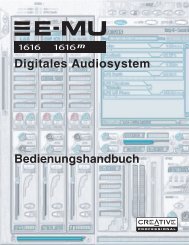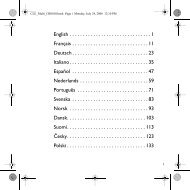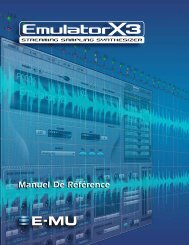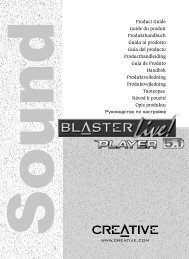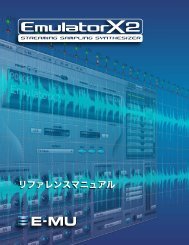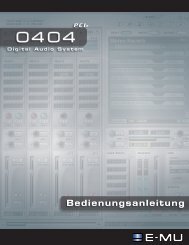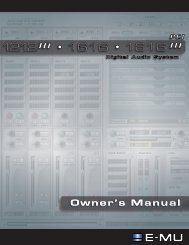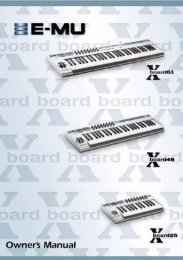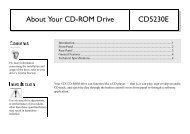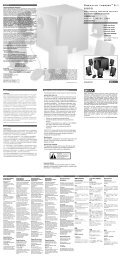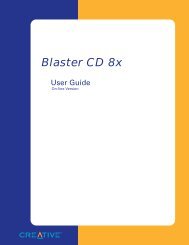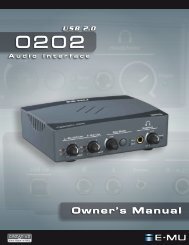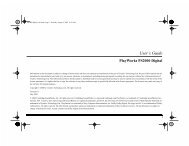Create successful ePaper yourself
Turn your PDF publications into a flip-book with our unique Google optimized e-Paper software.
Basic Recording<br />
The following step by step tutorials are designed to get you recording as quickly as<br />
possible. After you have finished the tutorials we encourage you to read the Cubasis pdf<br />
manual in order to learn about the many features of this powerful program. We have<br />
provided special PatchMix DSP Sessions, as well as a Cubasis Recording Template Song<br />
to go along with the following tutorials.<br />
Recording into Cubasis<br />
Follow these instructions if you have an <strong>0404</strong> system and Cubasis is installed on your<br />
computer. In this tutorial, we’ll assume you’re using just a single input or pair of inputs.<br />
For more advanced recording, refer to the Cubasis manual.<br />
Open the PatchMix DSP Mixer<br />
1. Open the PatchMix DSP mixer by clicking on the icon on the Windows Taskbar.<br />
To Load the Default Multitrack Session<br />
2. Click the “New Session” button, which is the upper left button above the TV<br />
screen. The following screen appears:<br />
3. From the 44k/48k tab, select 44.1 Mono-Stereo Session. This Session is all set up to<br />
record in either mono or stereo. It also has a WAVE strip and one pair of ASIO<br />
outputs (31& 32) used for monitoring the main output of Cubasis.<br />
4. The Session Settings screen appears showing 44.1kHz. Click OK.<br />
5. If you wish to record in stereo, connect a preamplified instrument or microphones<br />
to inputs L/R. To record in mono, connect to either the left or the right input.<br />
Open Cubasis<br />
6. Open Cubasis by clicking on the desktop shortcut.<br />
7. On Cubasis, select File, Open.<br />
8. If you want to record in Mono open the Cubasis Arrangement (<strong>0404</strong>) mono-stereo<br />
template” which is located here: (My Computer\Local Disk-C\Program<br />
Files\<strong>Creative</strong> Professional\PatchMix DSP\VST\Recording Templates).<br />
6 - Working with ASIO<br />
Basic Recording<br />
f Because unused strips<br />
waste DSP resources as<br />
well as needlessly<br />
complicating the mixer<br />
display, you may want to<br />
delete the strips you<br />
aren’t using.<br />
E-MU Digital Audio System 55



